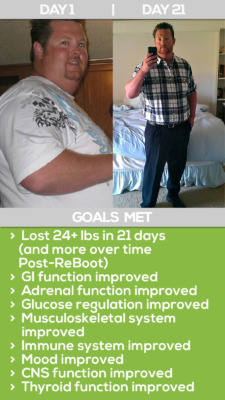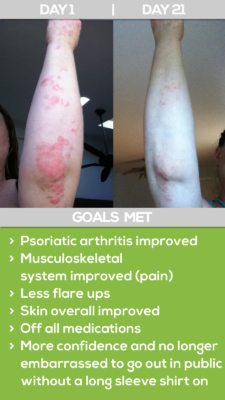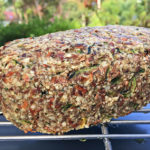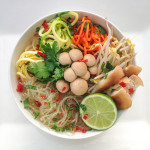Finally getting this Certified Nutrition You Can Trust out of the blog archive, and for good reason on why I wanted to wait… this amazing tool is now available that I wanted to share on this post: “Food Scores” by the EWG.
This tool will give you the ability to “Rate Your Plate” and search 80,000+ foods all given a score 1-10 based on nutrition, processing (whole foods vs. processed), and ingredients (including ratings based on factors like pesticide-load, additives, contaminants, antibiotic residue, etc).
It literally just came out today, so I haven’t had too much time to look through it… but from what I see so far, I’m liking it and I think it will be a great tool to help you out when choosing foods! A simple search and you can get a good idea of the quality of foods (or food-like products) and brands you and your family are consuming.
You are what you eat!
OK OK, enough of that excitement… now on to our Lunchables post, which I’ll add, for the example meat, cheese, cracker, cookie one I used for this post, scored a 10 on the Food Scores (the worst score possible).
Lunchables:
We live in a high paced, nano-second driven world, where grabbing for convenience can sometimes be a necessity, including sending our kids off to school with convenience foods like a Lunchables, money for vending machines and school lunch program options. I wish I could say our school lunch programs and cafeterias at all grade levels, K through college, served quality sourced, integrity real food and were great for health, vitality & performance (and growth & development for our children), but the mass majority don’t… not even close. In fact, it’s some of the worst food and the quality can be worse than fast food chains. Would you eat this day in and day out? How about this?
When I’m consulting with parents I usually give them this “ah-ha”: would you eat the food served in a prison? Would you have your children eat it? And would you eat it day in and day out?
Usually the answer is “no”. The reason I do it is because the mental association to prison usually = bad, and the mental association with school usually = good. But the truth of the matter is the same Big Food sources of food that are served in a prison, are the same, if not worse, Big Food sources we find in many school lunch programs, as well as, ingredients and quality we find in Big Food convenience products like a Lunchables.
Convenience in today’s food supply world doesn’t typically = healthy.
So I do understand convenience works when grabbing something like a Lunchables… but at what expense to our health? What expense to our children’s health, growth and development?
Big Food does an amazing job marketing and disguising ingredients so many parents and individuals just don’t know how unhealthy these food-like products are. The Lunchables website for example doesn’t even list their ingredients so we can’t check! But on most all food [-like products], it’s all very calculated so that our attention is focused to the front of flashy packaging and buzz words like “natural”, “fat-free”, “reduced-fat”, “low-calorie”, “Only 100 calories!”,”gluten-free”, “high in fiber”, “good source of protein” etc. while being driven away from the tiny-size text on the back label: the part of the packaging we truly need to be focused on… and even when we do find ourselves looking at the ingredient label, that can be confusing in and of itself where you feel like you need a PhD in chemistry to understand what some of the words are, right?
And that’s why we do consumer awareness Certified NYCT posts like these.
In this post, we’re going to look at some of the Not Certified Nutrition You Can Trust suspect ingredients in a Lunchables, as well as look at healthier Certified Nutrition You Can Trust alternatives for a Lunchables.
Click Here to Pin This!
NOT CERTIFIED Nutrition You Can Trust
The Lunchables is an Oscar Meyer food-like product owned by Kraft Foods – one of the biggest Big Food companies there is.
There are MANY ingredients in a Lunchables that are suspect for optimal health, vitality and performance. In total, over 50+ ingredients just in the basic ham and cheese version. In a generalized-sense, ham should be ham (pig) and cheese should be cheese (dairy/milk), plus an ingredient here or there… shouldn’t it?
So why 50+ ingredients?
Nutshell Answer: Longest possible shelf-life, flavor enhancers, appetite stimulating ingredients (if you eat more, you buy more), addictive-property chemical ingredients, cheap filler ingredients, plus much more. The point to understand is all the attributes of a food-like product like this are designed for one thing:
Highest possible profit per unit.
They are not designed for highest possible health, vitality and performance.
Non-Nutshell: A few books I have in my library that covers Big Food ingredients in detail:
All four I highly recommend.
So let’s look at some of the 50+ ingredients below for a Ham & Cheese Lunchables variety that comes with an Oreo cookie:
 Label for small ham, cheese, cracker & Oreo cookie Lunchables
Label for small ham, cheese, cracker & Oreo cookie Lunchables
Sugars:
Sugar is found in almost every part of this particular Lunchables: the cookie, the ham, as well as the crackers; overall 17 grams of sugar in the entire package, or over 4 teaspoons. Consumption of sugar has been shown to suppress the immune system for up to 5 or more hours. In the early 1800’s average sugar consumption was less than 10 pounds per person, per year. Sugar was a luxury then the affluent could usually only afford. Today, on average, 130+ pounds per year, per person [infographic], and I’ve seen statistics up to 180 pounds. Let’s just call it a lot! Sugar has been shown to cause inflammation (the chronic problems ending in -itis = inflammation), insulin resistance, weight gain, non-alcoholic fatty liver, and much much more.
Processed sugar should be limited as much as possible in the human diet, in my opinion.
High Fructose Corn Syrup: As for one of those sugar sources we find in the Lunchables, high fructose corn syrup (HFCS), the best way to describe it is like cocaine. What I mean is, for example coca leaves are used as teas and medicinally in countries in South America (and have been for centuries). Think of this like raw, unprocessed fructose we would find in fruit. Yet highly refined coca leaves on a large scale gives us cocaine, not so good for our health, right? Think of this like our high fructose corn syrup. High fructose corn syrup is essentially highly refined, chemically processed sugar made from corn and one of the most dominant ingredients in processed food-like products today. 88% of the corn in the US in genetically modified, and even though by law not labeled, it’s a good chance HFCS in processed Big Food products is GMO-sourced.
HFCS has been linked to cancer, hypertension (high blood pressure), obesity & weight gain, diabetes, liver damage, and much more. Here is a great infographic.
Suspect Fats:
Partially Hydrogenated Oils: in general, all partially hydrogenated oils should be avoided. The heating and chemical manipulation produces trans fats which have been linked to coronary heart disease, increased LDL cholesterol, systemic inflammation (in general, inflammation leads to MANY chronic problems), plus much more.
Soybean Oil: you’ll find soybean oil and it’s derivatives (partially hydrogenated, etc.) in many processed food-like products because it is a cheap oil, as well as predominantely GMO (94% soy crop in the US is GMO). If you read about the history of soy, it was never intended to be an edible food to consume. Our ancestors from Asia used fermented versions of soy, but not the food-like product version we find used today. A great book on this topic I have in my library and recommend is The Whole Soy Story by Dr. Kaayla Daniel.
Additives, Preservatives and Artificial & Natural Flavors:
Vanillin: An artificial flavor for vanilla. Vanilla extract works just fine, thank you!
Artificial flavors such as sweeteners, as an example, are usually marketed to be included as “diet” or “weight loss” items because they’re sugar-free and calorie-free. Unfortunately, they’ve been shown to do the opposite, including promote metabolic syndrome, obesity, and even alter our gut bacteria metabolism triggering harmful metabolic changes. They’ve even been marketed to help in diets for people with diabetes, and just in the news recently a new study showed artificial sweeteners may promote diabetes. Awesome.
Natural Flavors: many “natural flavors” aren’t so natural, and more so, they can be one of hundreds lumped under the G.R.A.S. list, or Generally Recognized As Safe, that the FDA puts out. What this means in plain English is, if you see the word “Natural Flavors” on a label, you don’t know if that means 1 ingredient, 10 ingredients or 100 ingredients… as long as they are on the G.R.A.S. list, they can be added under one name – Natural Flavors.
How many additives even end up on the G.R.A.S. list is suspect in and of itself. In a nutshell: companies looking to market or include their additives in a product provide their own research (conflict of interest) to the FDA… the FDA does not have their own independent researchers conduct studies on the additive. Here’s a great write up explaining the process in more detail.
Natural flavor vs. Artificial flavor: Another ingredient we see on the label is “flavor”. Is that natural? Is that artificial? What the heck is flavor anyway? and how can you tell what’s allowed and not allowed in organic? Jon, I’m confused! …Read this write up, it gets in-depth on the topics.
Added Synthetic Vitamins/Minerals:
We don’t often talk about the vitamins & minerals “fortified” in food. Usually we see a big, flashy message on the label that says “Fortified” or “Added” or “Enriched”, overall giving the perceived feeling to an unknowing consumer of “oh sweet, added vitamins & minerals this must be healthy for me!”. Far from the truth. Synthetic vitamins are not ideal for your health and can be an entire blog post in and of itself, so in a nutshell, there are a few main things you should understand with them:
- Made in a lab, not from nature: synthetic vitamins are not the same as whole-food vitamins found in foods, and they’re predominately what we find on grocery store shelves as supplements, as well as added in our foods. Synthetics are man-made and although may look like real food varieties in the lab, they do not behave in the body the same and can draw vitality & resources from the body in order to fully assimilate (if not urinate out as waste). For example, Vitamin C in nature as a whole-food matrix includes cofactors like bioflavonoids that work in synergy with the vitamins to assimilate. Synthetic Vitamin C, or ascorbic acid, does not have these bioflavonoids. Synthetic B-vitamins are made from coal tar. Awesome. Live-source B-Vitamins is what your body needs or you’re just peeing away money.
- Cheap: they’re cheaply made for highest profit returns
- The Why: they’re added because they are “processed” out of the foods, giving us, literally, dead food. I explain this “why” and how fortifying of food all started in detail at the beginning of this post.
You can read more about synthetic vs. natural vitamins here. When choosing a vitamin supplement in general, I always recommend (and personally use) a real fo0d-sourced (raw materials) high quality supplement or nutraceutical.
Suspected Genetically Modified Organisms (GMO):
As of this blog post, GMOs are not labeled by law in the U.S., although they are labeled in 64 other countries around the world.
I’ve got a quick question, does that mean those 64 countries are hysterically wrong in labeling them, or just the U.S. ?
But I digress…
So what I mean by “suspected” is that these are simply the odds of the ingredients being GMO. We know Kraft was part of an anti-GMO coalition that contributed over $40 million to defeat GMO labeling in my home state, California. We know that Kraft-based foods in other countries that do require GMO labeling shows GMO ingredients, as well as my professional common sense opinion regarding the ingredients used and knowing the corners and costs Big Food cuts to make the cheapest possible food-like product, for the highest profit-margin return per unit.
In other words, my best educated guess is there are GMO ingredients and I would not recommend consuming them. Why? Here’s just some problems... oh and here’s some more.
I’m Pro-Science, but I’m also an odds guy and GMOs in my opinion based on the research is a crap shoot for your body when you look at it as a comparable and ask, what’s likely more ideal for my health, vitality & performance: Non-GMO food that’s been around since the beginning of, well, food… or GMO the past 20 years or so? A flash, of a flash, of a flash…of a flash in the pan of human genetic history. I choose non-GMO every time.
At present, the only way we would know a Lunchables ingredients were not GMO, is if the Lunchables package carried the Non-GMO Verified Seal. It doesn’t.
Suspected GMO ingredients: Soy, Soybean Oil, Soy Lecithin, High Fructose Corn Syrup (GMO corn), Sugar (GMO sugar beets), Canola Oil, Cornstarch, partially hydrogenated cottonseed oil (GMO cotton), Dairy-based products such as cheese & milk ingredients (cows given rBGH, or robust bovine growth hormone, a genetically modified growth stimulant so cows produce more milk).
Most all of these ingredients above are part of the “Top 5” GMO-grown crops in the US. Here is an infographic I found from Whole Foods of the current stats:
Click Here to Pin This!
So on average, there is 90%+ chance that any of these 5 ingredients if you see them or their food-like product derivatives on a food label, are genetically modified.
CERTIFIED Nutrition You Can Trust
So how can we do our own REAL FOOD Lunchables and avoid these food-like product ingredients?
First and foremost, you can buy organic versions of all the individual Lunchables foods (ham, cheese, crackers, cookie) and cover most of your tracks for all the ingredients we discussed above. From the list of suspect ingredients we covered, organics standards currently prohibits the use of:
- All GMOs in organic foods
- High fructose corn syrup (GMO)
- rBGH (GMO)
- Artificial flavors
- Partially hydrogenated oils
So just buying organic you won’t need to dissect food labels for these particular type of ingredients as they are prohibited. As for other food additives and preservatives that could be detrimental to our health, non-organic versions can be added to organic foods (carrageenan and gastrointestinal symptoms for example). Here is a list. That all said, my advice is get in the habit of always checking labels, whether organic or not. If you ever have a question about a specific ingredient, feel free to ask me, I’m always happy to help.
By the way…did you also notice that we NEVER cook with any of these ingredients at home? We don’t have partially hydrogenated oil in our pantry, right? We have oil. We don’t have a spice shaker filled with Potassium Sorbate (preservative), right? It doesn’t exist in our pantry. And we definitely don’t have a bottle of raw, organic high fructose corn syrup – what would that even look like?
Real food doesn’t have this stuff… food-like products disguised as food does.
As for alternative NUTRITION YOU CAN TRUST for a Lunchables, here are some of my recommendations, as well as brands that I like:
1. Make your own Lunchables:
Buy the individual ingredients from integrity sources [organically grown/raised] and brands, and put your own “Lunchables” together.
Here’s a few brands for each individual food item we find in a Lunchables that I approve Nutrition You Can Trust:
Ham:
Applegate Farms is a solid brand and readily found in most grocery stores. They also have their own version of a Lunchables called “Half Time“. I’ll add however, as of this post, I have not dissected it’s label and ingredients like I have with the Lunchables. That said, I do know with 100% certainty that it is the better option for health than the Lunchables by Kraft. Ideally if you can find a local source in your area where you can get integrity raised ham, that would be my first and most optimal choice for your health.
5 ingredients in Applegate ham vs. 14 ingredients in Lunchables ham
Cheese:
- Organic Valley raw cheddar cheese is a good choice. Make sure to look for the “grass-milk” version (or for any cheese you buy, you want 100% grass-fed, pastured organic cows for best integrity source)
- Organic Pastures is a great brand I like not only for raw cheese, but raw milk, kefir, raw cream & raw butter as well. All from high quality, integrity-source organic pastured cows.
2 ingredients in Organic Valley raw cheddar vs. 14 ingredients in Lunchables “Pasteurized Prepared American Cheese Product”
Crackers:
Crackers in general are a food-like product (we don’t find crackers in nature on plants, right? They’re man made), however there are some decent brands that use integrity-sourced ingredients and minimal processing methods to keep it as close to real food as possible:
You can also make your own homemade raw bread or crackers. <—-one of my favorite real food remix recipes on the blog to date…a must try!
6 ingredients in Mary’s Gone Crackers (as example) vs. 9+ ingredients in Lunchables crackers
Cookie:
For the cookie in this particular compare/contrast Lunchables post (see image below), I went with the closest thing to an Oreo specifically because we find an Oreo in the Lunchables Ham & Cheese version covered. The one I used was Newman’s gluten-free oreo. However, some of my favorite brands for cookies are:
- Mary’s Gone Crackers does cookies
- Go Raw is a great brand not only for cookies, but bars, sprouted seeds (including Watermelon seeds that I love!), even granola if you or your kids like cereal (most cereals are garbage, especially the Big Food options).
- Two Mom’s in the Raw also have truffles, bars and granola
Ex. 3 ingredients in Go Raw original super cookies vs. 14+ ingredients in Lunchables Oreo
TOTAL: ~16 real food ingredients vs. 50+ food-like product ingredients
2. Cost Difference:
In my post How to Save Money On Organic Foods, I broke down the pricing of a Lunchables (and items that are in it) with buying all the individual foods from a higher quality, integrity source. The cost difference of buying a Lunchables and buying individual organic integrity-sourced versions and making your own was a little more than a 25 cents per serving.
3. Meal prep:
But Jon, Lunchables are just so convenient because I can grab one and be on my way…it saves me time!
Besides the health implications from the ingredients we’ve covered in this post, let’s break down the “convenience” and time for making our own Lunchables. So let’s use a 5-day, work week or school week example for one person. You can buy 5 Lunchables, or you can buy all the foods that comes with a Lunchables and meal prep your own fairly quickly since no real cooking/making of food is needed. I prefer stainless steel containers like Lunch Bots to a plastic container, and can simply prep all 5 in as little as 5 minutes and keep them in the fridge for the week. Pretty easy, yes? Look at this example below:
I literally timed it with a stop watch and this took me less than a minute to roll up some ham, slice some cheese and add some cookies & crackers. Based on the cost difference, for less than $1.50 more per week, you can have the healthiest version of your own homemade Lunchables, and avoid many suspect ingredients that are not optimal for robust health, vitality or performance for yourself or children (especially their growth & development).
In Summary: Nutrition You Can Trust “Points for Success”
- Make your own real food lunchable, ditch the “trashables”. The versions we can buy at the store are garbage.
- As a general rule, if it’s advertised on TV, don’t eat it… and remembering that convenience (even though we all love it, it’s natural, you’re not weird!) in today’s Big Food supermarket world typically does not = healthy.
- Big Food is about maximizing shelf-life, flavor, profits and keeping you coming back for more; not maximizing health.
- Utilizing simple “kitchen rules” like meal prepping and understanding many of the price misconceptions of the convenient processed foods vs. organic, integrity-sourced whole foods, will help you dial in your most optimal health, vitality and performance; for yourself, family and loved ones.
- Always read your labels. The suspect ingredients we covered in this post are generally found in many, if not all, food-like products from Big Food sources we find on our supermarket shelves. So we can dissect this Lunchables label, but we can also dissect conventional, Big Food-sourced cookies, cereals, juice boxes & sports drinks, canned goods, even the individual ingredients in a Lunchables (Ritz crackers, Oreo’s, etc), and find these same type of suspect ingredients on the labels. If you have a question about a specific ingredient, you can always ask me.
BE THE CHANGE: Awareness is key to healthy lifestyle changes in all of our lives. If you have a friend, family member and/or colleague that would benefit from the information in this post, please share it! It’s up to us to transform our food so we can transform our body, and when we transform our body, we can transform our life!
Until the next blog, I hope you enjoyed this education post and I thank you for the continued support!
Jon
























I need to show this to my daughter’s mom so she stops giving her this crap
Right on, Will
thank you for this! I love your awareness posts Jon!
Cheers Jasmine, much appreciated and happy to hear you enjoy
I used to think nothing of these until I started researching more of the ingredients that are in them and other food PRODUCTS. It’s absolutely crazy how much sh*t (excuse my language!) these companies get away with to make a buck. Thank you for doing posts like these. I love the book recommendations you mentioned as well! The Crazy Makers is right!!!
You’re welcome, Jen. Once you lift the veil of deception, you see a whole new look at things.
Thank you for this article I’ll be sharing it with my sister. She gives these to her kids and she has no idea about the ingredients.
Excellent re: sharing. Awareness is key! Glad you enjoyed it, Gloria.
meh im still gonna eat them
freedom of choice is a beautiful thing
you’re a person who can’t prepare foods, and it might not fill you up
you’re a person who can’t prepare foods, and it might not fill you up because lunchables consists of miniature food
if this still can’t warn you then here you’re wasting 23 dollars and 3 cents every week you can get spaghetti ingredients for almost 16.45 ( you’re wasting for lunchables from monday to friday.)